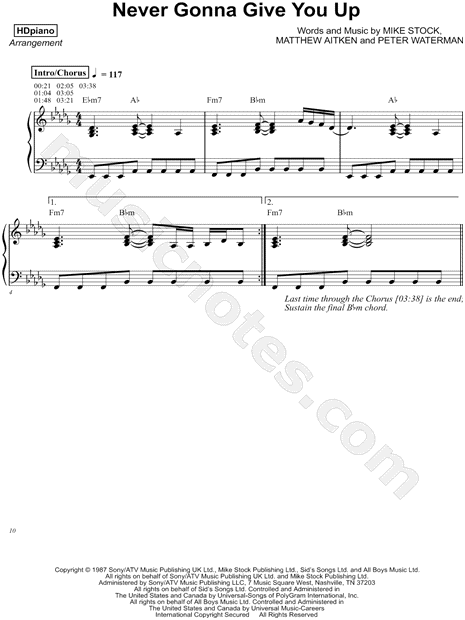
NEVER GONNA GIVE YOU UP CHORDS UKE HOW TO
How to Play 10 Easy Ukulele Songs with 4 Chords This takes some practice but is great for when you don’t have a tuner handy. After time you may be able to tune your ukulele by ear. You should check your tuning before you play. If your instrument is new, played often, or has old strings you may need to adjust your tuning more often. Continue the same process on the E-string and A-string. Adjust the correct tuner to get your C-string in tune. Check your tuner to see if the note played is higher, lower, or directly on C. Once you’ve successfully tuned your 4th string to G it is time to repeat the process on the C-string. This is the tuner you will turn to adjust the length of your string. You will see what tuner the string wraps around. Follow the G-string to the top of the headstock. To find the tuner head for the G-string, put your finger on the G-string. If the note you played is higher or lower than G you will need to adjust the tuner head attached to the G-string. Holding the ukulele in the correct position, use your thumb of the right hand and strum down on the 4th string. Another option is to use a tuner app on your smartphone. If not you can use a tuner that attaches to the headstock. We will tune the ukulele starting at string 4. Now that you know the names of each string, it is time to tune your ukulele. This will be helpful for you to know when you start reading tabs. String 4 is on top, string 1 is on the bottom. It is important to note that when looking down at your strings, while in proper position, the number of the strings is in reverse order. The bottom string is called “string 1.” This string is known as the A-string. The next string down is “string 2.” The second string is known as the E-String. The next string down is “string 3.” The third string is known as the C-String. The string closest to the top is called “string 4.” This string is also known as the G-string. With the neck of your ukulele on the left side of your body, look down. Now that you have your ukulele held in the proper position, let’s take a look at the names of strings. You will want to maintain this hand posture as you begin to move through various chord fingerings. Your thumb should be inline with your one finger. Your wrist should have a natural rotation. Bring the pac-man shape up to the neck of your instrument close to your headstock. Using your left hand to make a pac-man shape. The saddle and bridge should be on the far right. The neck should point towards the left side of your body. You should be able to support your ukulele with your right hand while you adjust the neck positioning. You will notice the neck of your instrument is pointing to approximately 2pm. The back of the body of your ukulele should be held against your chest. Using your right hand, bring your instrument to your chest. To hold your ukulele, in the perfect position, use your right hand to hold your ukulele where the neck meets the body. The body of your instrument has the soundhole, bridge, and saddle.


The neck has 4 strings and the fretboard. Were you able to identify each of these pieces? The headstock has 4 tuners on it. Holding your ukulele, look for the headstock, neck, and body of your instrument.

How Do I Start Playing Uke? Holding Your Ukuleleįirst, it’s time to pick up your instrument. To play the songs in this blog post, all you’ll need to do is learn the fingerings of four chords and get comfortable transitioning between them.


 0 kommentar(er)
0 kommentar(er)
